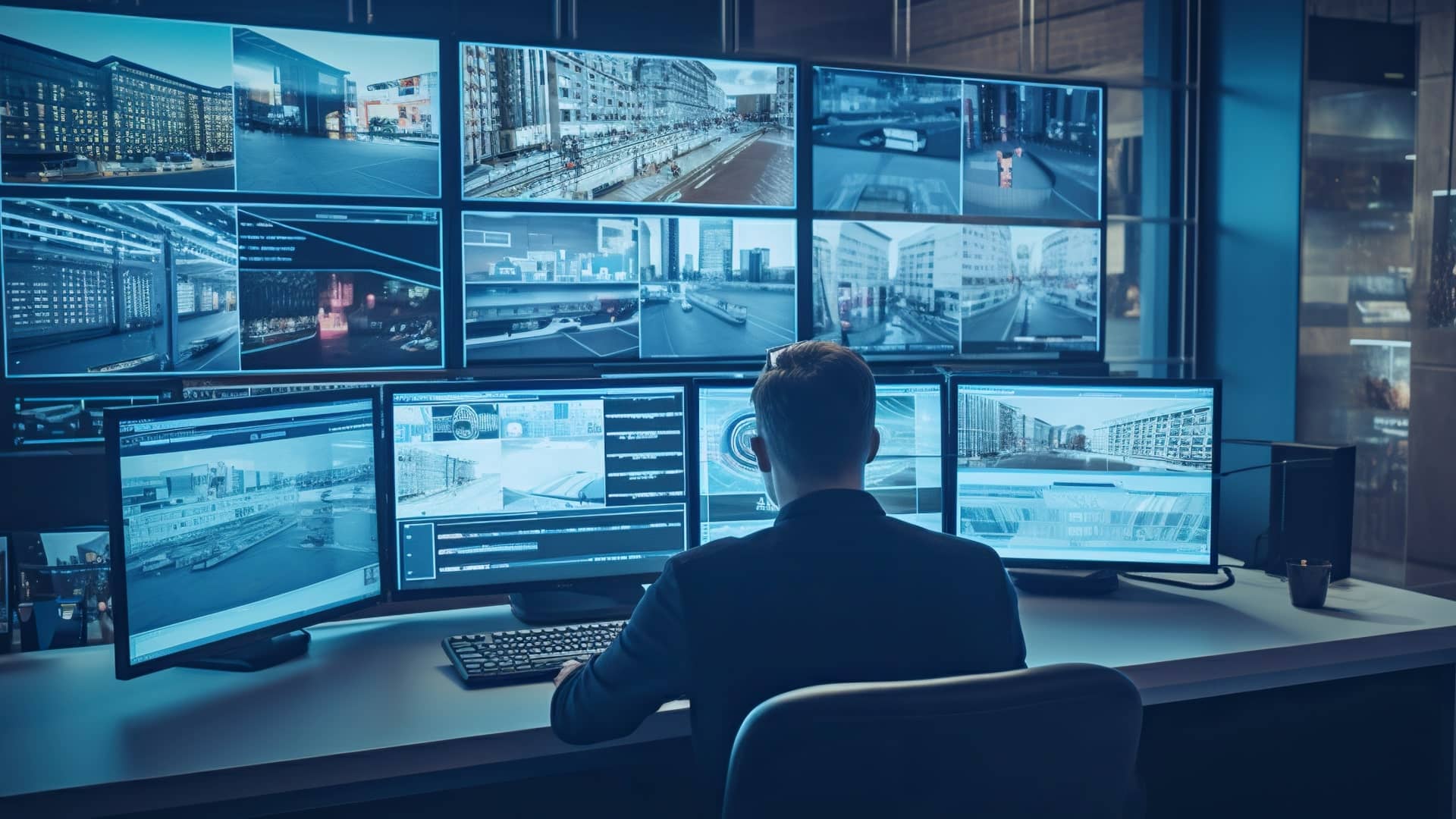Introduction
In the constantly evolving world of fleet management, keeping a vigilant eye on your vehicles is paramount. This is where a Video Monitoring System comes into play, revolutionizing the way fleet operations are monitored and managed. This comprehensive guide will walk you through the essentials of Video Monitoring Systems, their functionality, and the myriad benefits they bring to fleet management.
Understanding Video Monitoring System
A Video Monitoring System is a sophisticated technology designed to provide real-time surveillance and recording of fleet vehicles. These systems typically comprise cameras installed inside and outside the vehicle, a central processing unit, and a storage unit. They engineer these systems to capture every detail of the fleet’s journey, providing a panoramic view of the operations.
How do They work?
The process is straightforward yet powerful. Cameras installed in strategic locations capture continuous footage of the vehicle’s surroundings as well as the driver’s behavior. This data is then transmitted to a central system where it’s stored and can be accessed remotely. Advanced systems come equipped with features like GPS tracking, real-time alerts, and analytical capabilities.
Why Video Monitoring is Essential for Your Fleet?
Implementing a Video Monitoring System in your fleet can be a game-changer. Here are some compelling reasons why you need one:
Enhanced Safety: It ensures the safety of the driver and the vehicle by monitoring driving patterns and alerting for any risky behavior.
Evidence in Case of Incidents: In the event of an accident or dispute, video footage serves as undeniable evidence, helping to quickly resolve conflicts.
Improved Efficiency: By monitoring routes and driver behavior, fleet managers can identify areas for efficiency improvements.
Reduced Costs: Preventing accidents, optimizing routes, and improving driver behavior can lead to significant cost savings.
Compliance and Liability Protection: Video evidence can prove invaluable in ensuring compliance with regulations and protecting against false claims.
Advantages:
The advantages of deploying a Video Monitoring System in your fleet are manifold:
- Real-time Monitoring: Offers the ability to watch fleet operations as they happen, enabling immediate responses to any situation.
- Driver Accountability: Encourages responsible driving, as drivers know their actions are being monitored.
- Theft Prevention: Acts as a deterrent against theft and unauthorized use of vehicles.
- Improved Training: Footage can be used for driver training, illustrating best practices and areas for improvement.
How to Choose the Right Video Monitoring System
Selecting the appropriate system for your fleet requires consideration of several factors:
- Camera Quality: Ensure the system provides high-resolution footage for clear visibility.
- Storage Capacity: Opt for systems with adequate storage to retain necessary footage.
- Ease of Use: The system should be user-friendly, allowing for easy access and analysis of data.
- Integration: It should seamlessly integrate with your existing fleet management software.
- Support and Maintenance: Consider the level of customer support and maintenance services provided.
How Video Monitoring Systems Can Help Fleet Managers?
Real-time Oversight and Control
Video Monitoring Systems provide fleet managers with eyes on the ground, regardless of their location. This real-time oversight enables:
Immediate Response to Incidents: Instant access to live footage allows managers to respond swiftly to any accidents, emergencies, or deviations from the route.
Proactive Maintenance: By observing the vehicle’s condition, managers can schedule maintenance before minor issues escalate into major problems.
Enhanced Driver Safety and Performance
Driver behavior is a critical component of fleet management. Video monitoring helps in several ways:
Driver Coaching: Reviewing footage helps identify risky behaviors like speeding or distracted driving, allowing for targeted coaching.
Incentivizing Good Driving: Managers can use video evidence to reward compliant and safe driving, fostering a positive work culture.
Reducing Liability: In case of incidents, video footage provides accurate details, helping to resolve disputes and protect drivers from wrongful claims.
Route Optimization
Understanding how vehicles move in real-time leads to more efficient route management:
Traffic Navigation: Live video feeds can help drivers avoid congested routes, saving time and fuel.
Better Scheduling: Insights from video data can help fleet managers plan more efficient schedules, avoiding delays and maximizing productivity.
Theft Prevention and Security
Fleet security is non-negotiable, and video monitoring systems serve as an excellent deterrent against theft and vandalism:
24/7 Surveillance: Continuous monitoring can alert managers to any unauthorized access or suspicious activities around vehicles.
Evidence Collection: In the unfortunate event of theft, video footage can be invaluable in recovering the vehicle and prosecuting the offenders.
Compliance and Documentation
Regulatory compliance is a significant aspect of fleet management. Video monitoring systems can help ensure adherence to legal standards:
Proof of Compliance: Video evidence can demonstrate adherence to driving hours, rest breaks, and other regulations.
Accurate Incident Reporting: In case of accidents, video footage provides an unbiased account, aiding in investigations and insurance claims.
Cost Savings and ROI
Investing in a Video Monitoring System can lead to substantial cost savings:
Lower Insurance Premiums: Many insurance companies offer reduced rates for fleets with monitoring systems due to the decreased risk of accidents and theft.
Reduced Wear and Tear: Improved driving habits lead to less frequent repairs and maintenance.
Fuel Efficiency: Optimized routes and better driving behaviors contribute to lower fuel consumption.
FAQs on Video Monitoring Systems for Fleets
Q: How does a Video Monitoring System improve fleet safety?
A: It improves safety by providing real-time footage, allowing for immediate corrective action in case of any risky behavior or external threat.
Q: Can Video Monitoring Systems be used for any size of the fleet?
A: Yes, they are scalable and can be customized to suit the needs of small, medium, and large fleets.
Q: How are the recorded videos stored and accessed?
A: The system’s provider typically stores videos on cloud servers or onboard storage devices and provides access through a secure platform.
Q: Is it legal to monitor drivers using video systems?
A: Yes, but it’s essential to comply with privacy laws and regulations. Informing drivers and obtaining consent is also recommended.
Conclusion
A Video Monitoring System is not just an add-on; it’s a necessity for modern fleet management. It enhances safety, improves efficiency, and provides invaluable insights into your fleet operations. By understanding how they work and the benefits they offer, you can make an informed decision about implementing a Video Monitoring System for your fleet. Remember, the safety of your fleet and the efficiency of your operations are paramount. Invest in a Video Monitoring System today and steer your fleet towards a safer, more efficient future.
This blog provides a detailed and user-friendly guide on Video Monitoring Systems for fleets, emphasizing their importance and benefits. By focusing on clear, concise, and active voice writing, it aims to inform and persuade fleet managers to consider implementing these systems for enhanced safety and efficiency.



